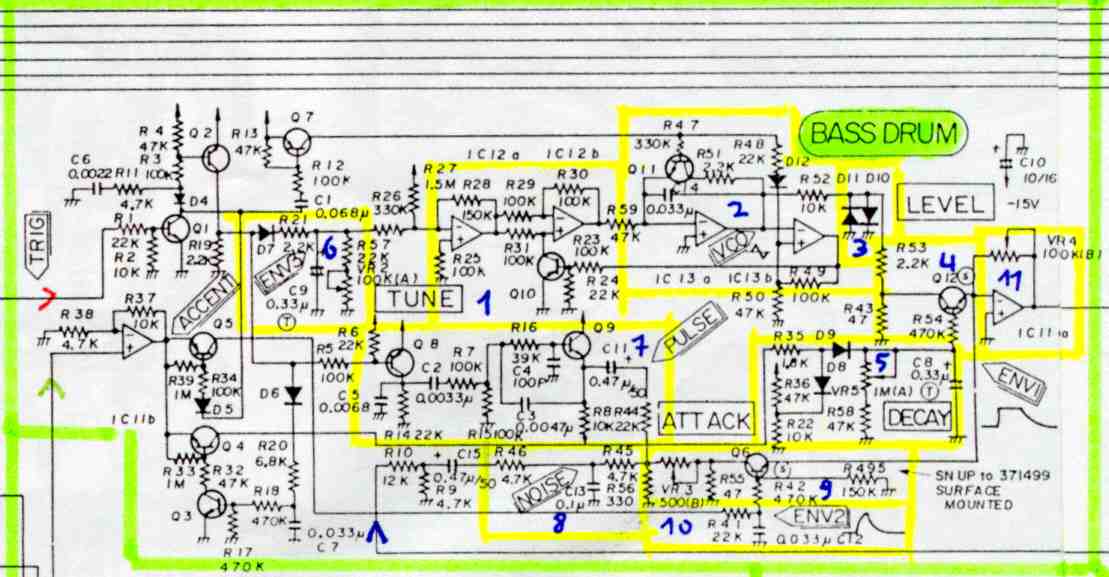
Bass Drum

> = Trig |
> = Accent or Velocity (from D/A) |
> = Noise |
Bass Drum consists of two parts. One part simulates the clicking attack-phase of the sound, where the other part provides the bottom end, which is responsible for the well known punch of this Bass Drum. Main circuit design is the same as described detailed in the Snare Drum section.
When TRIG (>) is applied to the base of Q1, ENV-3 (part 6) is started by Q2 collector, releasing a pitch modulation of the VCO (part 2) by controlling the Control Voltage Generator (part1). Modulation depth can be adjusted by VR2 (TUNE). There's also a positive pulse at the base of Q11, discharging C14 and resetting VCO at every TRIG period. The triangle waveform of VCO output passes a diode clipper (part 3) to get a sine wave. The amount of this part is determined by VCA Q12 (part 4) whose gain follows ENV-1 (part 5) which is in turn controlled by an ACCENT coming through Q4. ENV-1 is actually an important part of this circuit. It's shape (see small diagram near ENV-1) looks like a compressed Drum sound and that's the reason for the big punch mentioned above.
The second part of this instrument is separated into Pulse and Noise.
Pulse (part 7) is generated by a circuit using a low pass filter (Q8, R5, R6, R14, C22) and a band pass filter (Q9, C2, C3, C4, R7, R8, R15, R16) to form the trigger signal into the right pulse shape. The noise part uses the common noise generator, whose signal (>) is low pass filtered and mixed with the signal coming from pulse generator. The resulting signal passes through a VCA Q6 (part 9) which is controlled by ENV-2 (part 10).
Finally ATTACK and VCO-signal are mixed and amplified at IC11a (part 11) to provide level control.